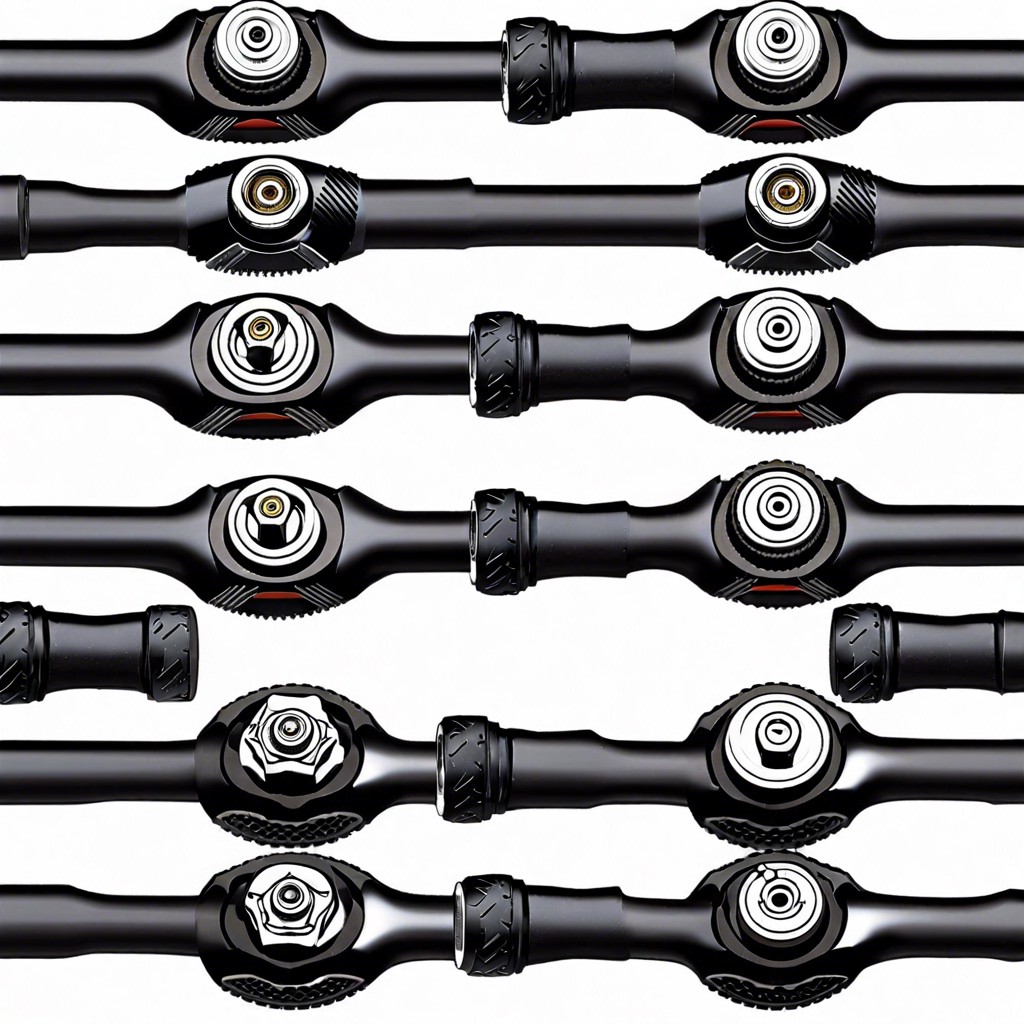Learn the straightforward steps for inflating your bike tire efficiently and safely.
Key takeaways:
- Identify your valve type: Presta, Schrader, Dunlop/Woods, or tubeless.
- Choose the appropriate pump: track pump, mini pump, CO2 inflator.
- Check recommended tire pressure (psi) for optimal performance and safety.
- Inflate tire to the desired pressure, using a pressure gauge for accuracy.
- Regularly check and maintain tire pressure for optimal performance and longevity.
Identify Your Valve Type: Presta, Schrader, Dunlop/Woods, or Tubeless

Recognizing the valve type on your bike tire is crucial for successful inflation. Presta valves are typically found on road bikes and are narrow and longer, with a locking nut at the top that you must unscrew before attaching the pump. Schrader valves are wider, akin to those on car tires, and feature a spring-loaded check valve that makes them compatible with a variety of pumps. Dunlop/Woods valves, less common but popular in parts of Europe and Asia, are a blend of the two and can usually be inflated using Presta compatible pumps.
Tubeless setups, gaining popularity for their puncture resistance and ride quality, often use a Presta valve, but the tire seals directly to the rim, making the process slightly different from traditional tubed tires.
It’s essential to match your pump to the valve on your tire. Adapters are available, but direct compatibility will save time and hassle. When faced with different valves, remember: skinny and threaded equals Presta, wider and spring-loaded equals Schrader, Dunlop falls in between, and tubeless requires a sealant for any puncture repairs post-inflation.
Choose the Appropriate Pump: Track Pump, Mini Pump, CO2 Inflator
Selecting the right pump is essential for effective tire inflation. Track pumps, also known as floor pumps, are the optimal choice for home use. They are stable, efficient, and typically feature a built-in pressure gauge, allowing you to easily reach the desired tire pressure.
For cyclists on the go, a mini pump is a compact and portable solution. It requires more effort than a track pump and lacks the convenience of a pressure gauge, but it is indispensable for roadside repairs.
CO2 inflators are the fastest method to reinflate a tire, delivering a burst of compressed carbon dioxide. They’re lightweight and space-saving, ideal for racers or those seeking minimal gear. However, they offer less precision than pumps and the cartridges are single-use.
When deciding on a pump, factor in the type of riding you do, where you’ll be inflating your tires the most, and how precisely you want to control the inflation process. Each option offers unique benefits to suit different cycling needs.
Check Recommended Tire Pressure (psi)
Knowing the correct tire pressure for your bike is crucial for optimal performance and safety.
You’ll find the recommended pressure range on the sidewall of your tire, displayed in psi (pounds per square inch). This range offers a balance of comfort, grip, and rolling resistance. Road tires typically require 80-130 psi, mountain bike tires 25-35 psi, and hybrid tires 40-70 psi.
Riding conditions can influence the desired psi within this range. Lower pressures can increase grip and comfort on rough terrain, while higher pressures may reduce rolling resistance on smooth pavement.
For precise inflation, use a pump with an integrated pressure gauge. Regularly checking and maintaining tire pressure adapts your ride to varying conditions and ensures tires last longer.
Inflate Tire to Desired Pressure
Once you’ve attached the pump to the valve, begin inflating the tire, checking the pressure gauge frequently if built into your pump. If not, use a separate gauge to ensure accuracy. For road bikes, pressures typically range from 80 to 130 psi, mountain bikes 30 to 50 psi, and hybrid bikes 40 to 70 psi. However, optimal pressure may vary based on weight and riding conditions. Remember, overinflating can lead to a harsh ride and increased puncture risk, while underinflating can cause rim damage and decreased handling. Stop inflating once you’ve reached the tire’s recommended pressure, ensuring not to exceed the maximum pressure noted on the tire sidewall. Finally, disconnect the pump carefully to avoid letting out air and replace the valve cap for protection. Regularly checking and adjusting your tire pressure is crucial for optimal performance and tire longevity.
Regular Tire Inflation: Frequency and Importance
Maintaining proper tire pressure is not just a one-time task—it’s an ongoing responsibility. Consistent checks, ideally before every ride, prevent sluggish performance and reduce the risk of flats. Remember, tires can lose air over time even without use, due to factors like temperature changes or permeation.
A well-inflated tire also ensures optimal contact with the road, improving traction, handling, and safety. For mountain bikers, the right pressure adapts to the terrain for cushioning and grip. Road cyclists benefit from increased efficiency and speed. Hybrid or commuter bikes carry similar requirements, with a balance between performance and comfort.
Be mindful of personal preferences and riding conditions, as they can dictate adjustments to the standard psi range suggested by the manufacturer. Beginners often err on the side of over-inflation, which can make the ride harsh and increase puncture potential. Conversely, under-inflation leads to increased rolling resistance, faster wear, and a higher chance of pinch flats.
Lastly, using a gauge for accuracy is key. Guesswork can lead to improper inflation, so invest in a pump with a built-in gauge or a separate one. Regular maintenance of your tires can enhance your ride, prolong tire life, and save you from avoidable repairs or accidents.